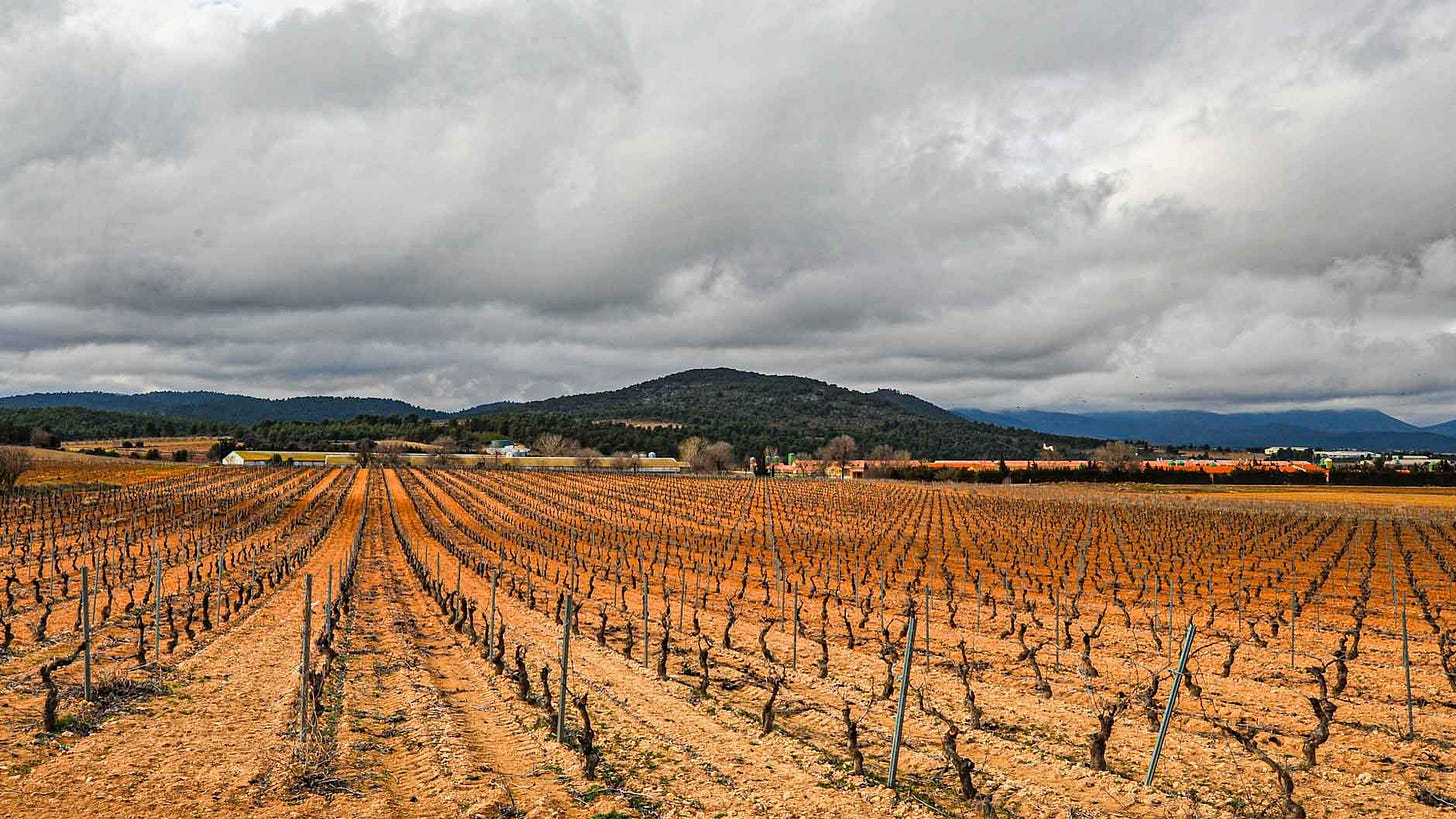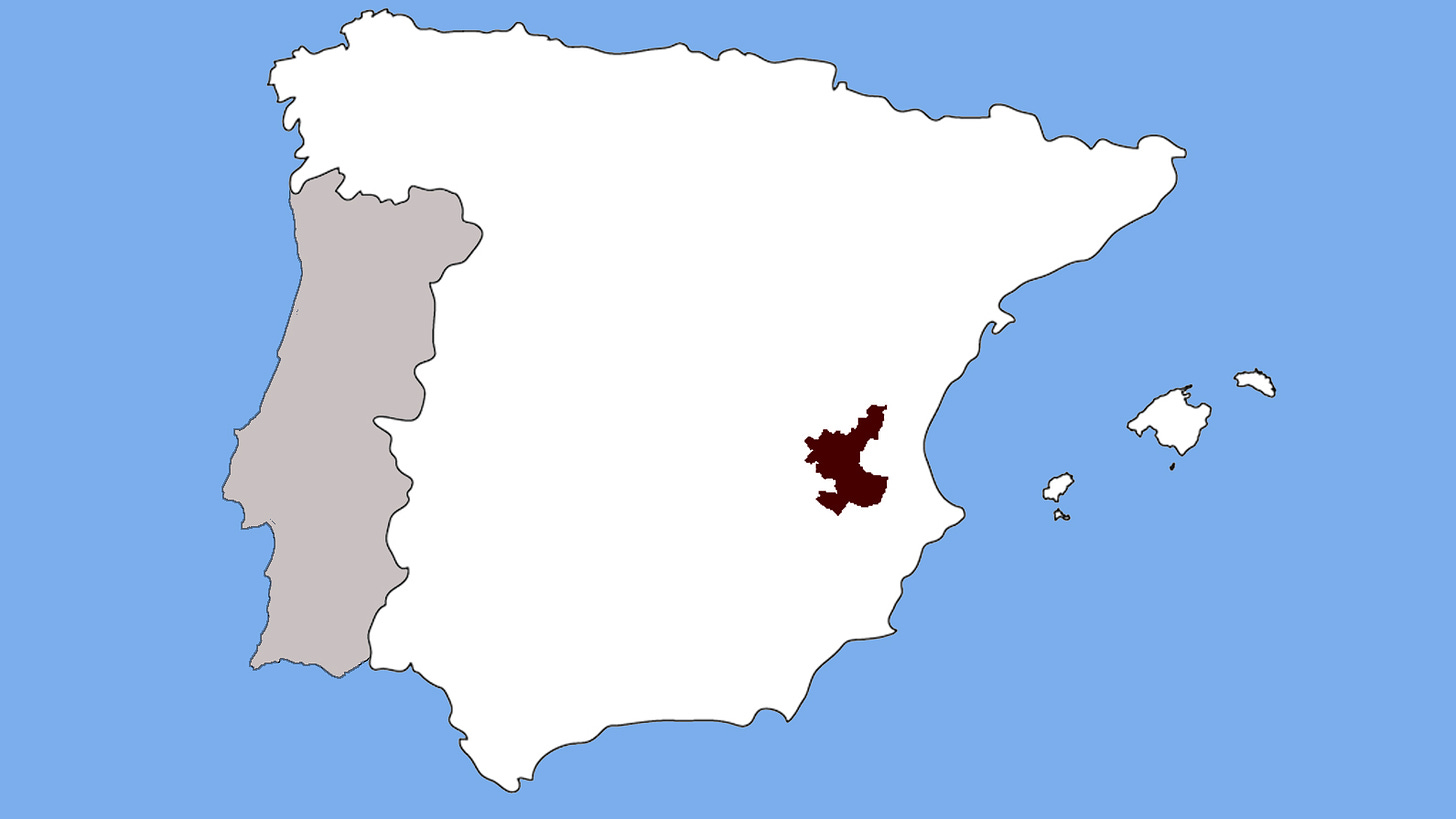DO Manchuela
This article was originally published on our old website, Simply Spanish Wine.
Key Points
Grape varieties: lots but mainly Bobal, Tempranillo, Garnacha Tintorera (Alicante Bouschet), Macabeo, Sauvignon Blanc, Verdejo
Hectares planted: 72,000 Hectares
Grape growers: 1,167
Wineries: 38
About Manchuela
If you live in the East of Spain near Valencia you might be familiar with Manchuela already. About 100 km inland from the Mediterranean, Manchuela wraps itself around the western side of another DO, Utiel-Requena, before stretching down towards Albacete.
Much of this area of Spain is, and always has been, winemaking country. For centuries, Spain’s mountainous geography frustrated internal communications, creating lots of isolated local markets, which meant that for coastal communities exporting was often easier.
Back in the time of the Phoenicians and the Romans, proximity to the seaport at Sagunto meant much of the wine produced here was exported across the Mediterranean. Those historical trading links are still with us today. The names of some of Spain’s best-known grapes often come from the names of the ports where the wines were loaded - like Monastrell, aka Mourvedre in France, which derives its name from Murviedro, the Roman name for Sagunto. Export is still a feature of Manchuela today, and some 90% of wines are destined for markets as far apart as China, Japan, the US or northern Europe.
The terrain of Manchuela
Manchuela’s 12,500 hectares of vines span the two provinces of Cuenca and Albacete and are sliced in half north to south by the Jucar and Cabriel rivers. The area is a plateau, between 600 and 1,000 metres above sea level, sandwiched between the coastal regions to the East and central Spain to the West. Most of the DO’s wineries are at the southern end, on flatter land below the A3 motorway that connects Madrid to the coast.
At the northern extreme, the Sierra de Mira mountains form part of Spain’s central mountain system. The two or three wineries up here farm some of the highest vineyards in Spain at around 1,100 metres above sea level. All that altitude means lots of temperature differentiation between day and night so grapes can ripen gradually and build up plenty of flavour and aroma without losing that all-important acidity.
The climate of Manchuela
Climate-wise, Manchuela is a transition region, between higher interior Spain with a more Continental climate with long, hot summers and harsh winters, and a more benevolent Mediterranean whose fresher, cooler winds in the lower areas help bring down the temperature in the vineyards at night.
On the high northern fringes, that Continental climate is more pronounced with refreshing winds that help keep vines healthy and keep down the need for chemical pesticides, hence the number of organic wines you can find in the DO. Further south, long hours of sunshine, and low and predictable rainfall all help make winegrowers’ lives easier.
The grapes of Manchuela
In terms of grape varieties, the native Bobal is the key grape to look out for. Bobal’s success is rooted in local winemaking tradition and export. A thick-skinned variety, resistant to drought and capable of adding a nice rich colour to red wines, Bobal was a prize blending ingredient for much of the bulk wine exported to a thirsty France throughout the late nineteenth and twentieth centuries.
Other permitted varieties in Manchuela include Monastrell, Tempranillo, and Garnacha, as well as some international varieties like Malbec, Merlot, or Syrah. White grapes include Macabeo, Albillo, Sauvignon Blanc, Viognier, or Muscat of Alexandria.
In summary
So to sum up. If you live in the Valencia region and fancy a wine weekend away, Manchuela is a great destination. A couple of hours up the motorway and you’re in the heart of the DO surrounded by wineries, restaurants, hotels, and guest houses geared up to welcome the budding wine tourist. What better way to spend a couple of days?






